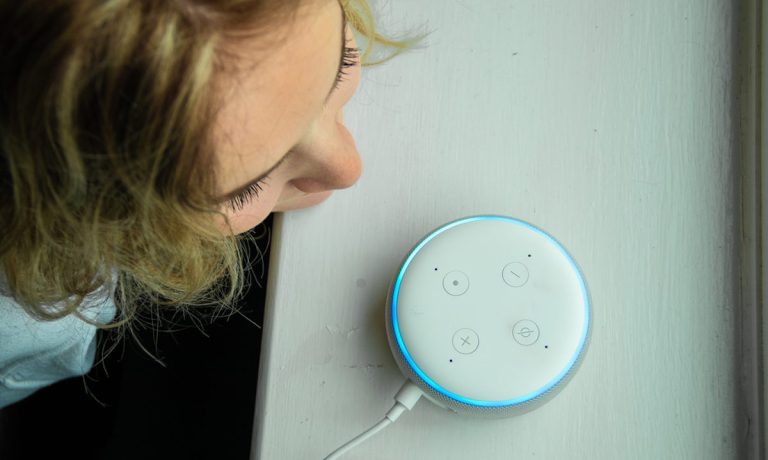Amazon Alexa Announcements Point to Connected Living Writ Large

In the aftermath of Amazon’s annual fall preview of its new hardware and voice-activated capabilities, the online retailer’s Alexa platform is set to become the operating system that connects it all.
That growing commitment to voice was followed shortly thereafter by another update on Oct. 1, which included Alexa’s ability to answer increasingly personalized and specific questions, from “what’s the most popular dog food?” to customer-specific queries like its “what are my deals” campaign, which creates new opportunities for merchants and consumers to connect.
And then on Monday (Oct. 4) came more Amazon news, as the eCommerce titan added new functionality allowing Prime subscribers to send gifts to friends and family members using just mobile phone numbers or email addresses, and letting the recipient tell Amazon where and when to deliver.
As its ecosystem continues to scale in new directions, more of Amazon’s long game is coming into focus. It’s about being embedded in consumers’ lives as an operating system not just for devices but for many aspects of living in the connected economy.
During last week’s full presentation, Amazon Senior Vice President for Devices and Services Dave Limp said, “Our goal has been not to build gadgets, but instead devices that are deeply integrated with services. When we’re at our best, those services, the content [and] the interactions are front-and-center, and the device itself fades into the background.”
That sounds more like an operating system description than another consumer electronics pitch, which would be correct. Limp made that distinction during his remarks as well.
As PYMNTS CEO Karen Webster recently wrote: “Alexa and voice AI is to the connected economy what Microsoft was to the PC in 1990 and what iOS and Android were to smartphones in 2008: the operating system that will help it scale.”
Related news: Voice Operating Systems Like Alexa Will Power the Connected Economy: Here’s Why
The Shift to “Ambient Intelligence”
Limp flipped the script somewhat during his presentation by talking up “AI” — what Amazon is calling “Ambient Intelligence” — powered by the other AI (artificial intelligence) the world is growing familiar with. He noted that this is the eCommerce giant’s next step in customer interaction.
In what could have been a veiled shot at Big Tech competitors like Apple, Limp said Amazon is differentiating from more traditional consumer electronics models by linking devices in such a way as to prevent people from disappearing into screens “with headphones in,” and instead being more present with family and friends via connected and shared digital experiences.
“We want to create more of these moments for our customers, and we believe the key to doing that is ambient intelligence, an environment where each of your devices and services is a thread in a fabric woven together by artificial intelligence,” he said.
Enabled by the Alexa operating system constantly learning and adjusting to user preferences in the background, Limp said “these are big shifts in the way customers relate to technology.”
Also see: Amazon Ramping up Alexa Voice Shopping With ‘What Are My Deals?’ Campaign
Dawn of the ‘Connected Family’
As always, it begins and ends with shopping. As PYMNTS reported on Oct. 3, “Alexa can also help shoppers plan what to buy by answering questions and building a shopping list, recommend products by sharing customer recommendations and current deals, add items to a shopping cart and suggest items based on the shopper’s Amazon order history, and track orders and confirm delivery. The company offered 14 phrases to customers in the announcement to get the most out of shopping on Amazon.”
With Limp adding, “you’ll see how [an] ambient experience can create a more connected family,” the recent announcements and introductions, taken together with such comments, are creating expectations of far more connected initiatives yet to come from Amazon, and undoubtedly others.
You may also like: Amazon Adds Address-Free Gifting Feature Ahead of Holidays